Research projects
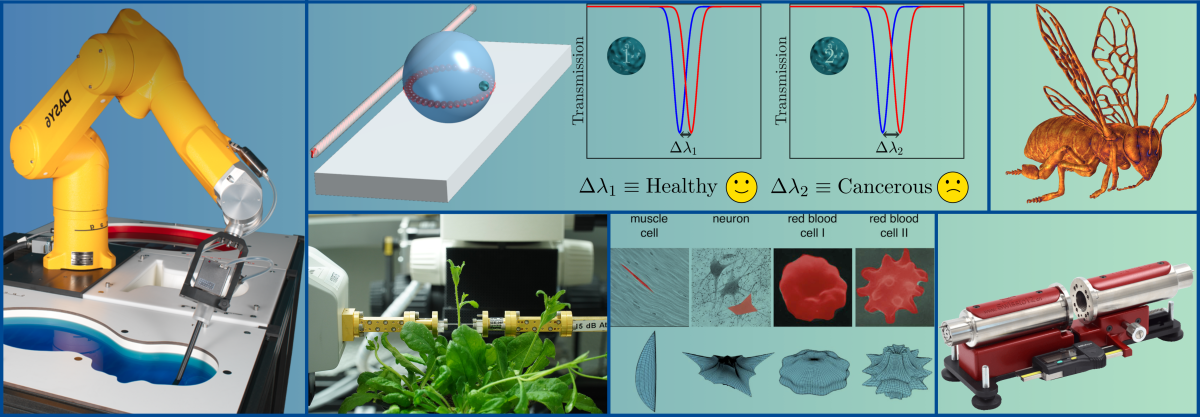
The current active projects
There are currently five research projects active in the ATE-BioEM center.
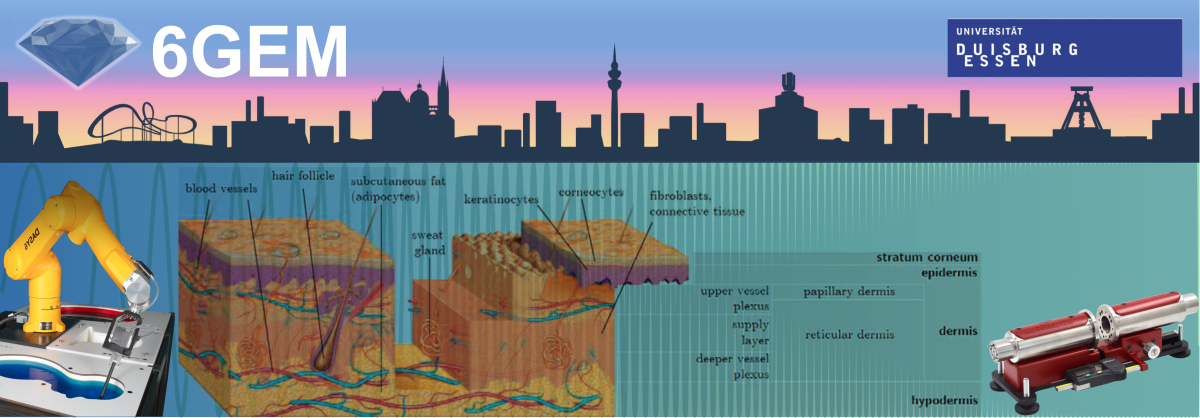
6GEM:
6GEM, “6G research hub for open, efficient and secure mobile communications systems” is a huge research hub consisting of four big universities of Achen (RWTH), Bochum (RUB), Dortmund (TUDo), and Duisburg-Essen (DUE) in the North Rhine-Westphalia. The goal of 6GEM is developing the required infrastructure for 6G mobile communications on all layers from high data transfer rate to open 6G system platforms, as well as security and safety by design, resilient and highly adaptive 6G communication and radar based sensors.
In this regard and concerning the fact that 6G communication will be widespread, a detail understanding of the interactions of 6G frequency bands with human tissues is vital. The ATE-BioEM center, which is a part of the 6GEM research hub, is responsible for developing models which can realize the interaction of 6G frequencies with human skin tissue, in order to determine the corresponding skin depth and specific absorption rate (SAR) in accordance to ICNIRP guidelines on limiting exposure to electromagnetic fields.
For more information visit the 6GEM website: https://www.6gem.de/en/
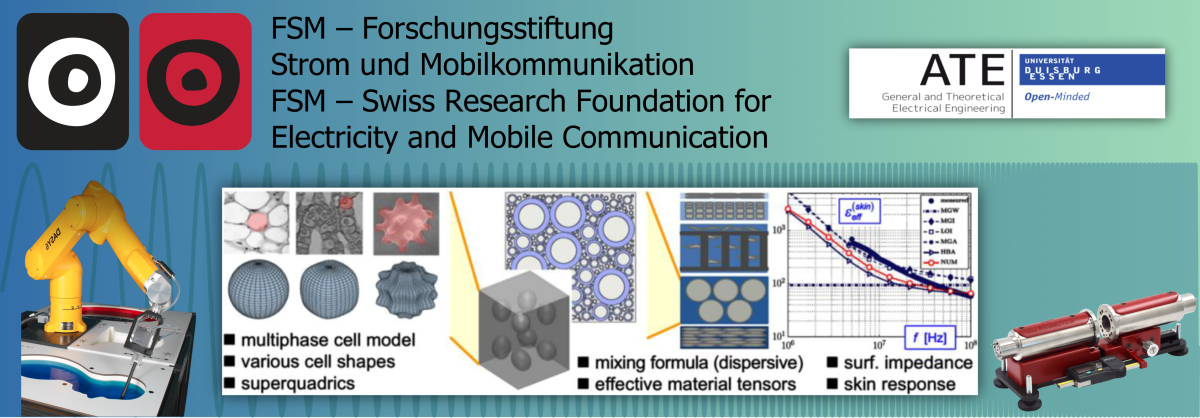
MicroBioEM:
Multiscale Computational Electromagnetics Modeling and Validation of Current and Energy Flows in the Skin Tissue Microstructure at mm-Wave Frequencies (MicroBioEM) is a research project founded by FSM; Swiss Research Foundation for Electricity and Mobile Communication; which is focused on developing a multiscale model of the skin tissue at 5G mobile communication frequencies up to the mm-wave range yielding macroscopic fields. The model should provide information about the specific absorption rate (SAR), power density, and temperature distributions that are accessible at the skin's surface and eventually act as a prediction engine, interrelating the experimental results of measurements on external quantity of the skin tissue to the internal quantities of the tissue’s microstructure.
To get an aggregated view on absorption loss (and its evolution along the penetration direction) and the dielectric function of the tissue sample we shall perform accurate transmission experiments using an engineered waveguide exposure system that is complemented with a (less accurate) reflectometry setup. THz imaging and thermography are utilized to provide spatially resolved data of the absorption and the local heat generation along the tissue sample, whereas nearfield probing with particularly engineered probe tips as well as with commercially available, certified mm-wave probes (i.e. the E-field mm-wave probe EUmmWVx from speag) will allow for a much more accurate picture of the local absorption respective heat generation.
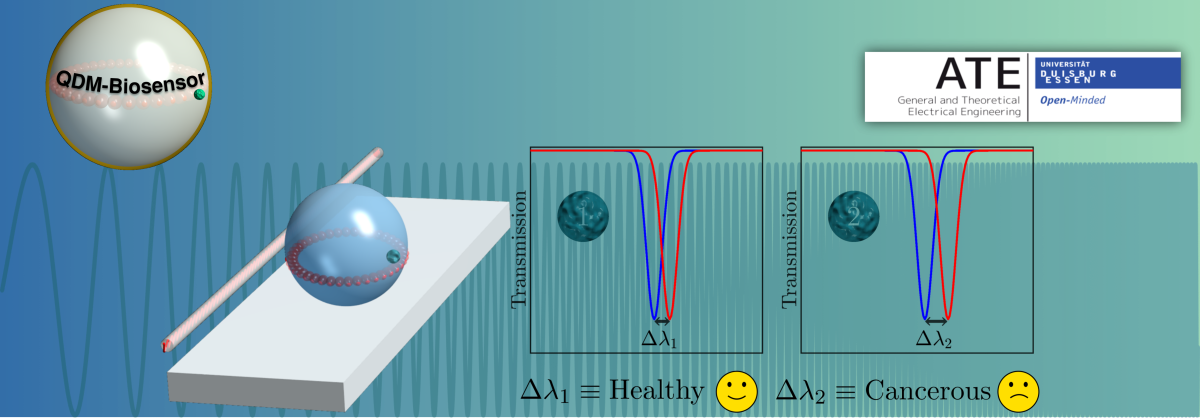
QDMBiosensor:
“Conceptual Development of an Ultra-Sensitive Biosensor Based on a Quantum Dot Coated Microresonator for Exosome Characterization and Specification”; QDMBiosensor; is a DFG founded project focused on exploration of ultra-sensitive concept for an excitonic-photonic biosensor capable of not only detection but also characterization of the underlying biorecognition element.
The project aims to conceptually design ultra-sensitive biosensors based on a photonic-excitonic coupling between a silica microresonator capable of sustaining whispering galley modes and a QD-doped shell showing excitonic mode, resulting in electromagnetically induced transparency, EIT and accordingly an unprecedent sensing limit. Such sensing limit can result in an early stage, non-invasive, label free cancer diagnosis technique.
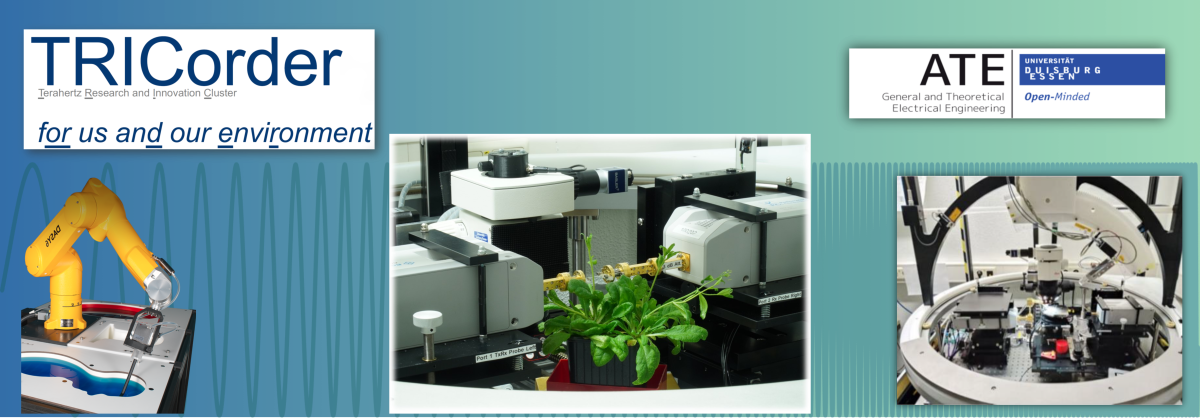
TriCoder:
TriCoder; Terahertz Research and Innovation Cluster for us and our environment; is a research cluster mainly composed of research teams within the university of Duisburg-Essen, focused on developing THz devices and techniques for medicine techniques (for us) as well as for environmental monitoring (for our environment). The research cluster aims to develop various techniques for THz monitoring applicable in both medicine or intended for environmental monitoring.
The ATE-BioEM center, as part of TriCoder research cluster, intends to develop plant monitoring THz based techniques capable of plant’s growth monitoring, detection of heavy metals on the plant or plant damage detection based on THz waveguides. Additionally, ideas for THz-based biosensors for diabetes, blood pressure and etc will be developed and will be, at the first stage, modelled.
An important goal of our center is building a bridge among various fields related to BioEM studies and correspondingly, a part of our TriCoder project is kept open for research ideas suggested from various fields of biology.
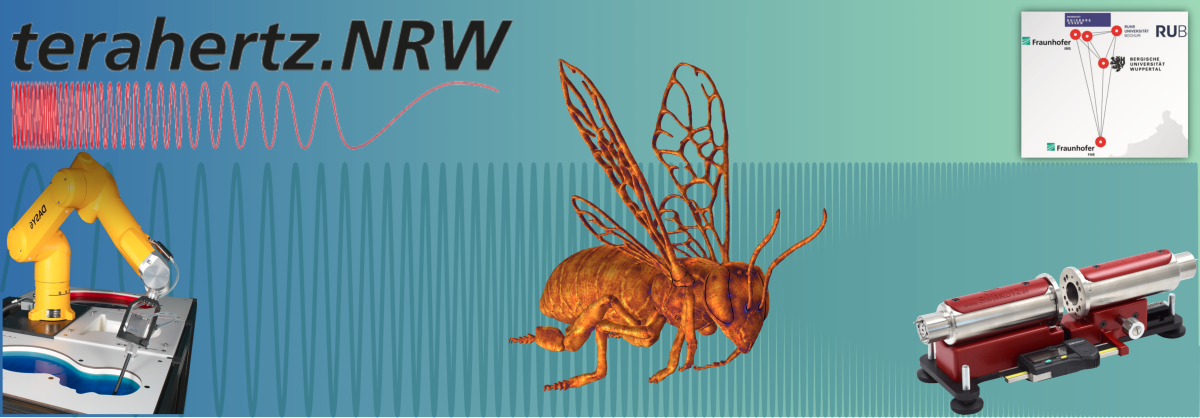
THz-Netzwerker:
The THz network NRW is a research hub that aims to close the gap between the THz fundamental research already on going on research hubs 6GEM and TriCoder, and also within the MARIE collaborative research center and innovative industrial applications of THz in five main areas namely communication technology, localization, material characterization, medical technology and environmental monitoring.
The ATE-BioEM center, as a part of THz-Netzwerker research hub and already active in THz-BioEM research in the scope of 6GEM and TriCoder intends to apply THz frequency band potential for insects monitoring. We are proud to be one of first research centers focus on environmental monitoring specially with regards to insects.
As insects have dimensions in the range of 6G up to THz wavelength ranges, which can cause unwanted hazards on insects due to radiation exposure, such study is imperative with regards to preserving the environment. Correspondingly, insects under such radiation bands will be investigated in details, determining the skin depths as well as potential resonances within the insect’s body. We relay on our collaboration partners in entomology field in order to acquire accurate insect models.
For more information visit the THz Netzwerker website: https://www.terahertz.nrw/

